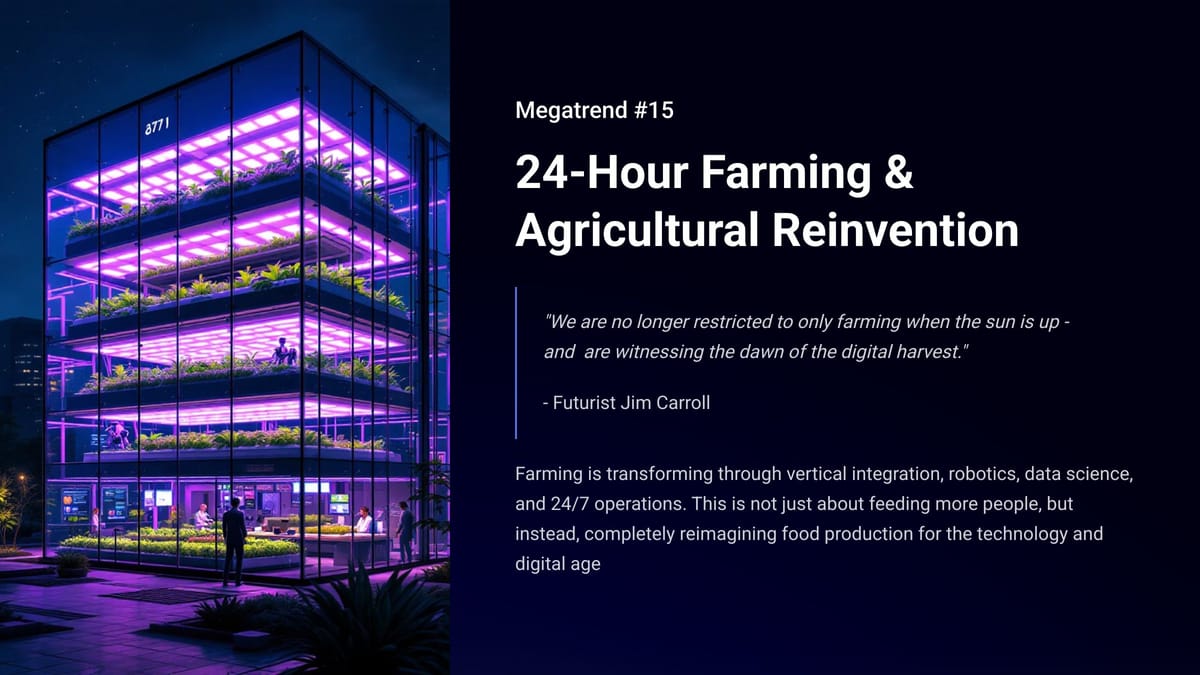"We are no longer restricted to only farming when the sun is up - and are witnessing the dawn of the digital harvest." - Futurist Jim Carroll
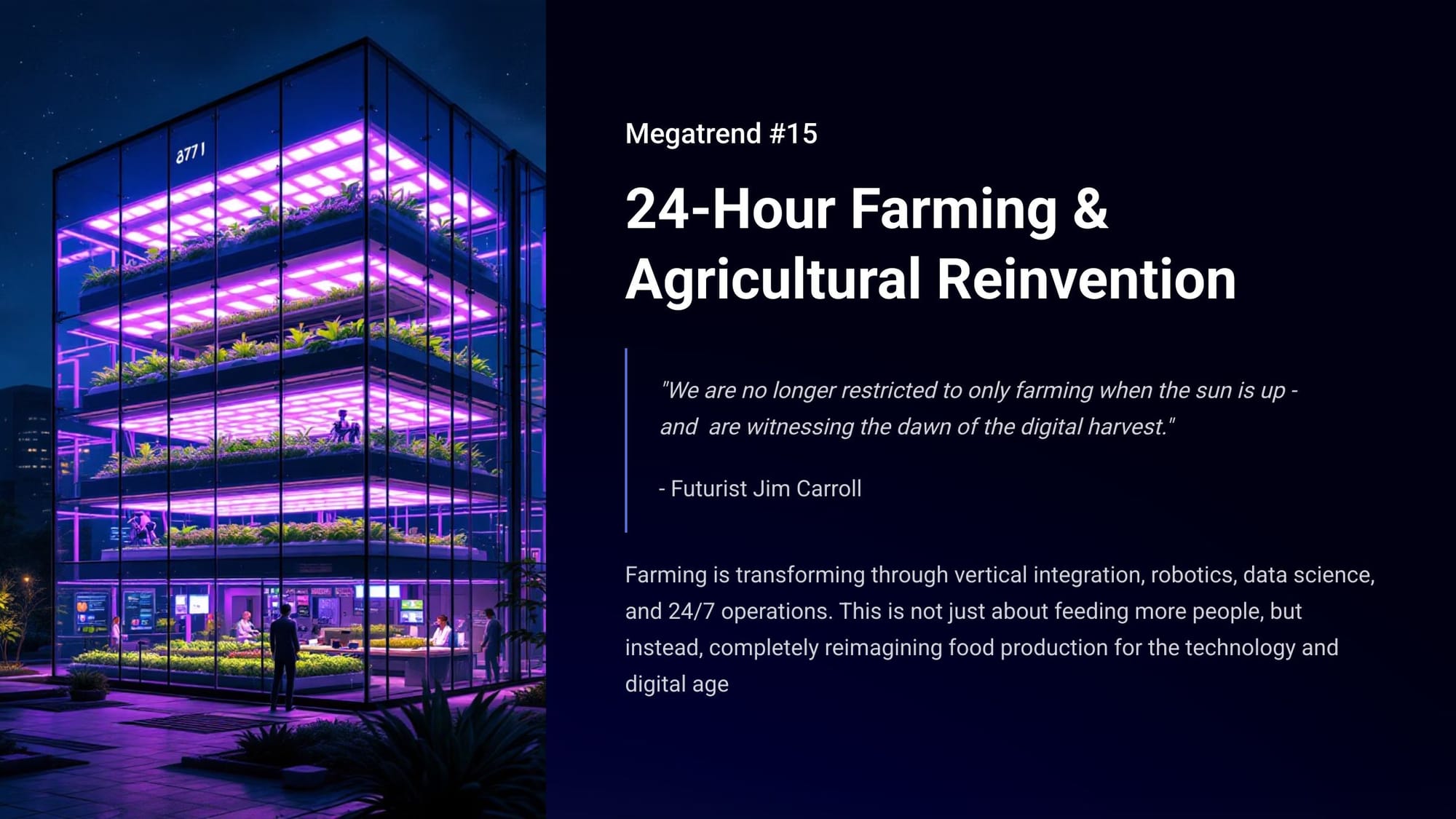
(Futurist Jim Carroll is writing a series on 30 Megatrends, which he first outlined in his book Dancing in the Rain: How Bold Leaders Grow Stronger in Stormy Times. The trends were shared in the book as a way of demonstrating that, despite any period of economic volatility, there is always long-term opportunity to be found. The book is now in print - learn more at dancing.jimcarroll.com)
Farming is transforming through vertical integration, robotics, data science, and 24/7 operations. This is not just about feeding more people, but instead, completely reimagining food production for the technology and digital age
I previously covered this megatrend in my "Big Future" series, which I ran a few years ago - you'll find the whole series over at - where else! - bigfuture.jimcarroll.com.
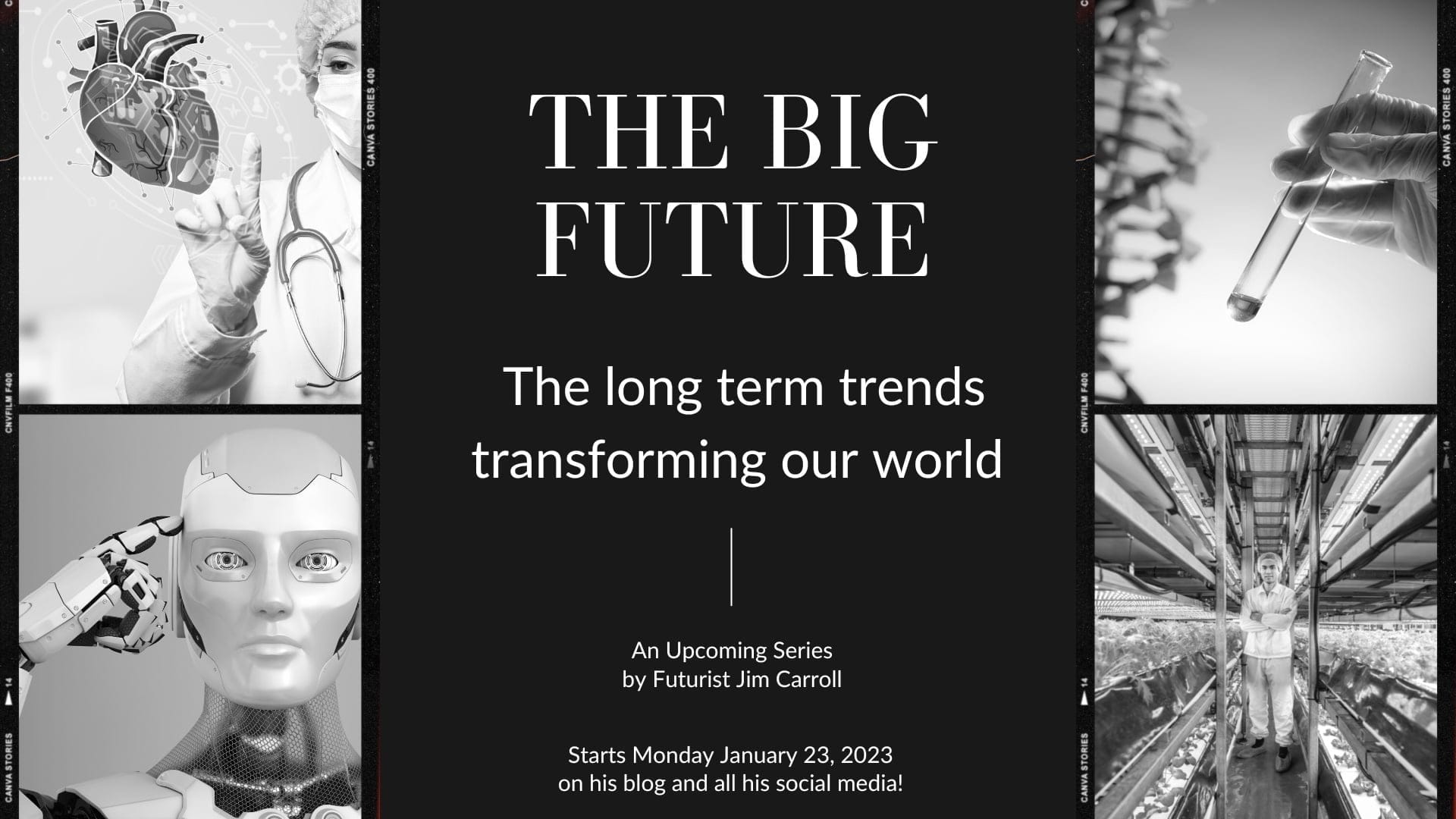
As I've always liked to say on stage, we're moving from a world in which we are no longer restricted to farming when the sun is up - we're moving to a world in which we can be farming 24 hours a day.
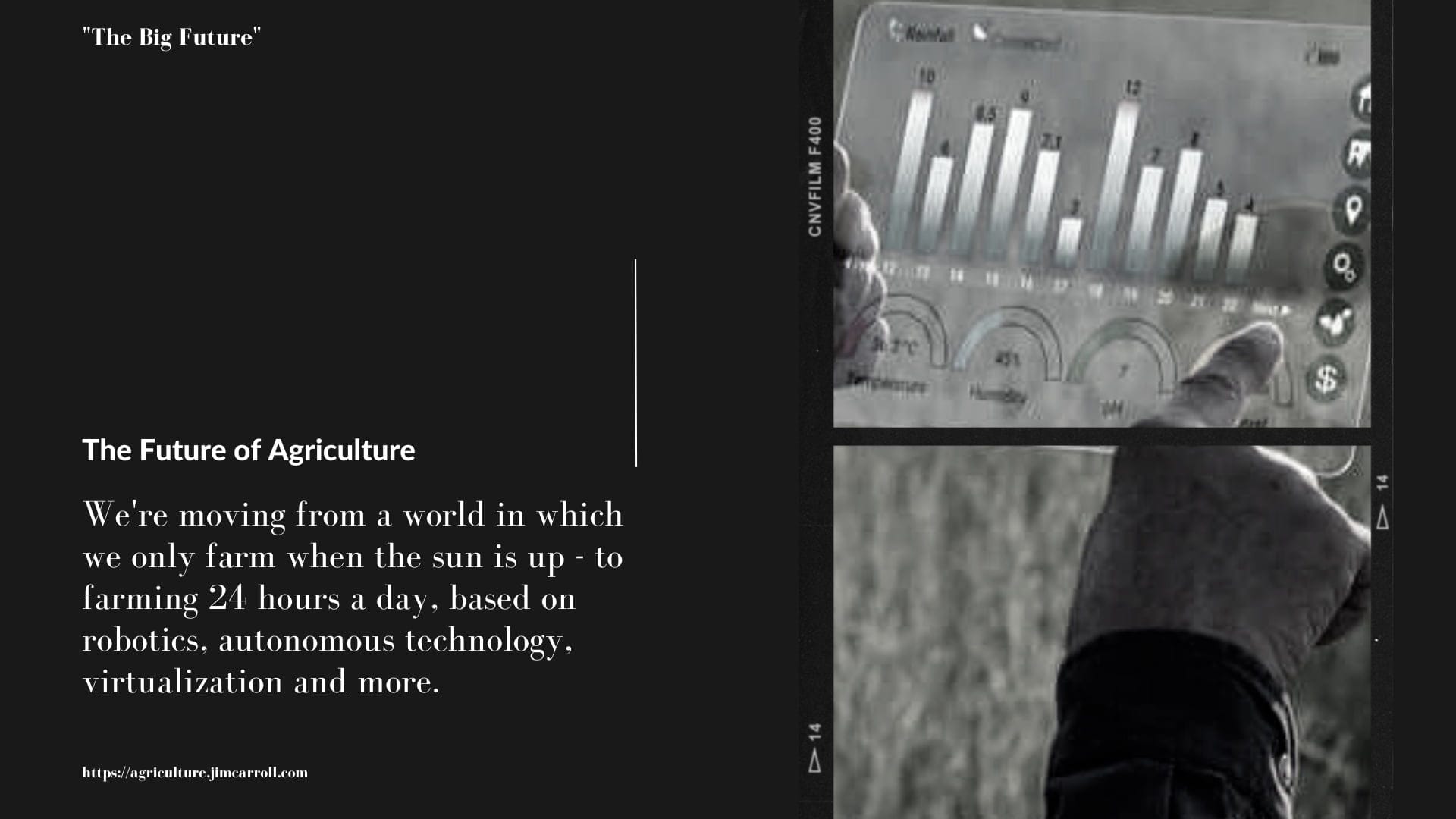
Here's what I wrote:
One of the most fascinating trends unfolding in our future involves the world’s oldest profession.
No, not that one.
Agriculture!
Imagine skyscrapers full of plants. That’s what begins to happen when the marriage of radical concepts, technology, and a pressing need for innovative thinking collide to provide for a very BIG trend.
One that leads to a potential future in which we are no longer restricted to farming outdoors – in the future, we will be doing much more of it indoors as well. As a global society, we need to do this because as the world’s population grows to 8 billion, we need BIG, bold solutions to come up with new ways of growing global food production. And what has happened is that our early experiments with the concept of growing indoors are about to enter the industrial scale, as we see the arrival of trends that bring together technology, advanced science, disruptive ideas, and new concepts – bringing into reality a new industry that promises to provide fast innovation that solves one of the biggest challenges of our time!
Vertical farming at scale.
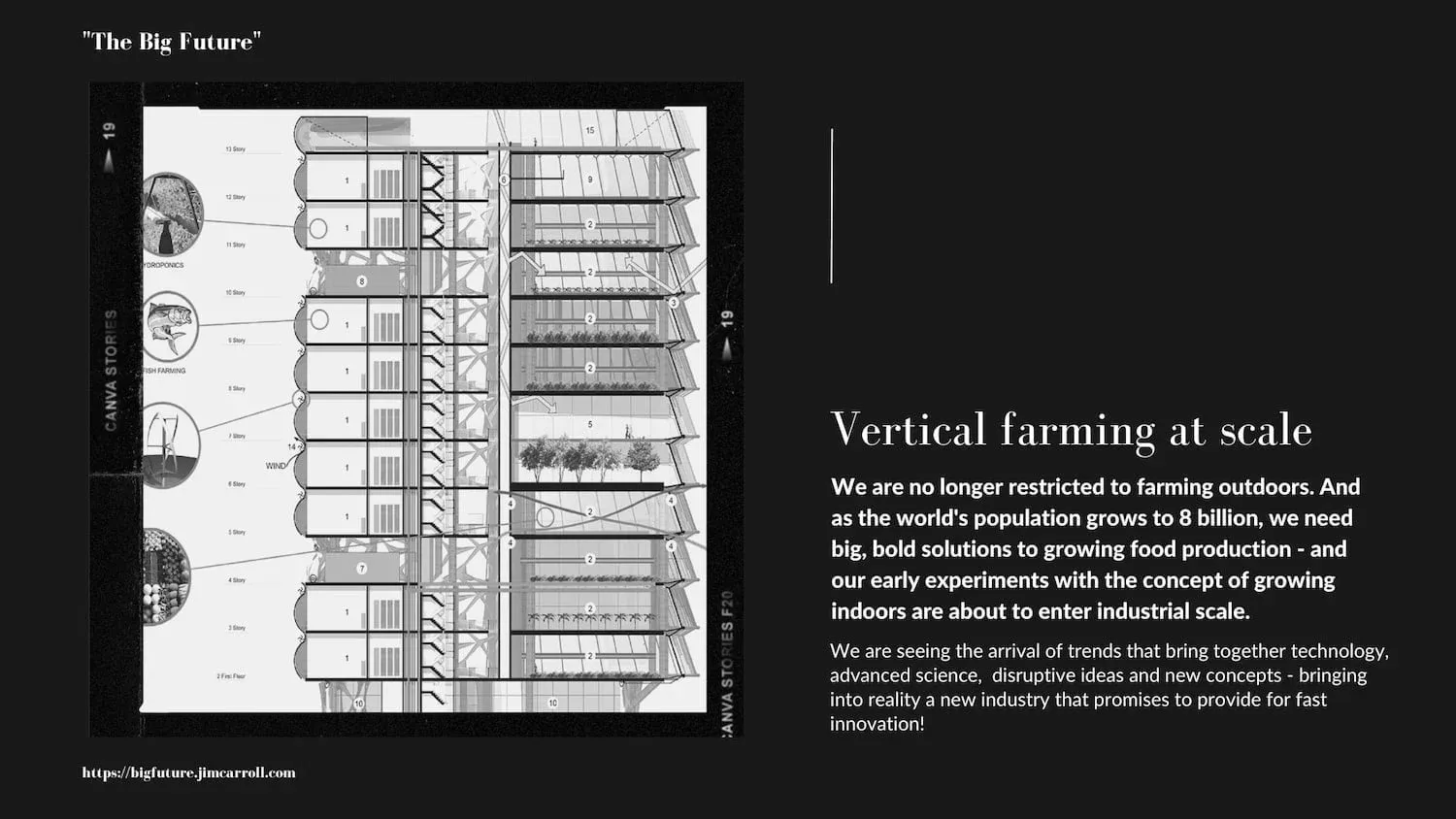
Although a few years old, the post is well worth a read, but I've also updated it a bit more here, particularly with the investment outlook. You can read the full PDF, Agricultural Reinvention: 24/7 Food Production for the Digital Age, here.
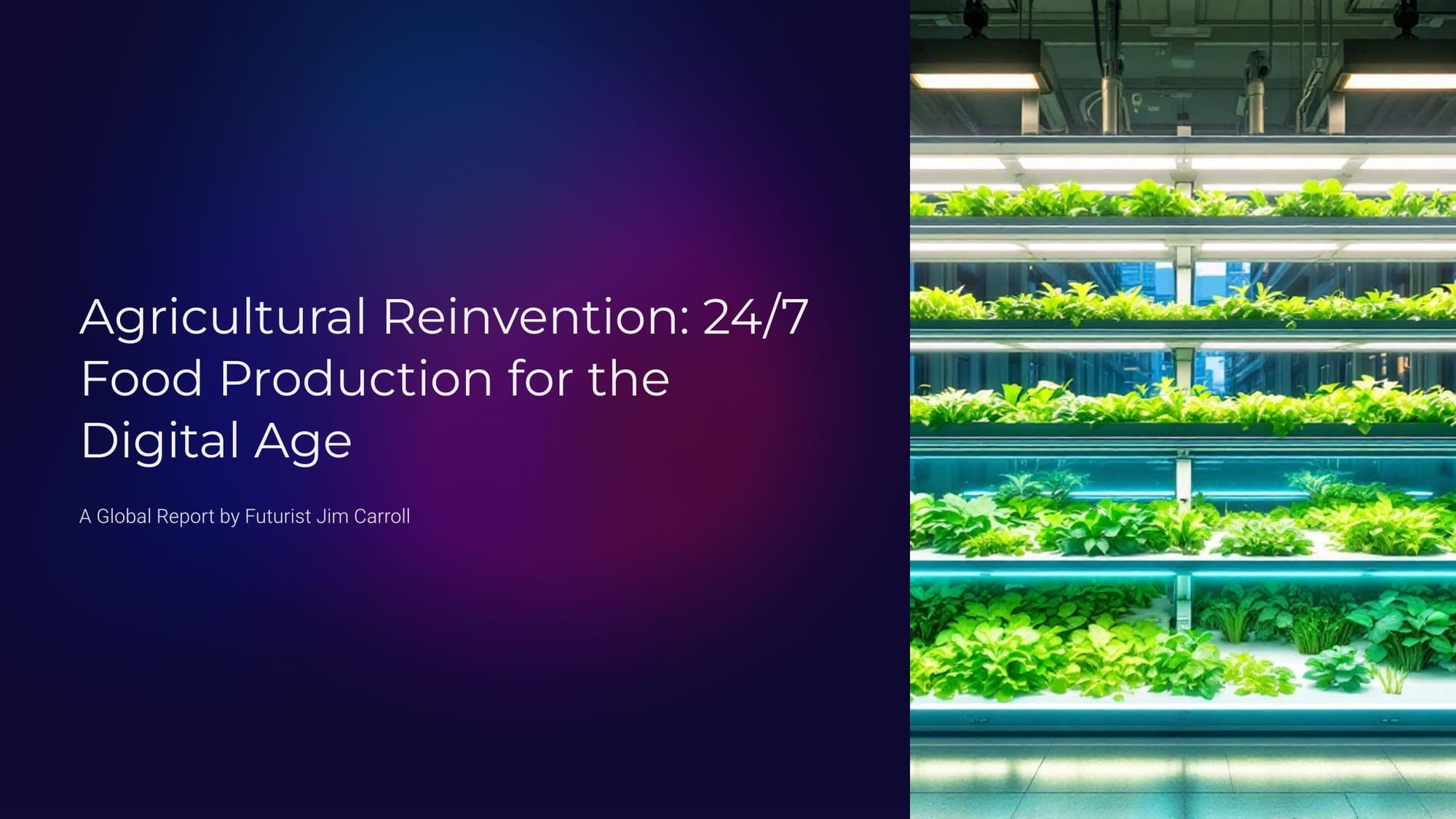
Let's dig in. The reinvention of agriculture through vertical farming and other ideas represents a fundamental paradigm shift in global food production - not just an improvement on existing methods, but a complete reframing of agriculture as a technology and engineering-driven industry. Like I always say - it's not granddad's farm anymore!
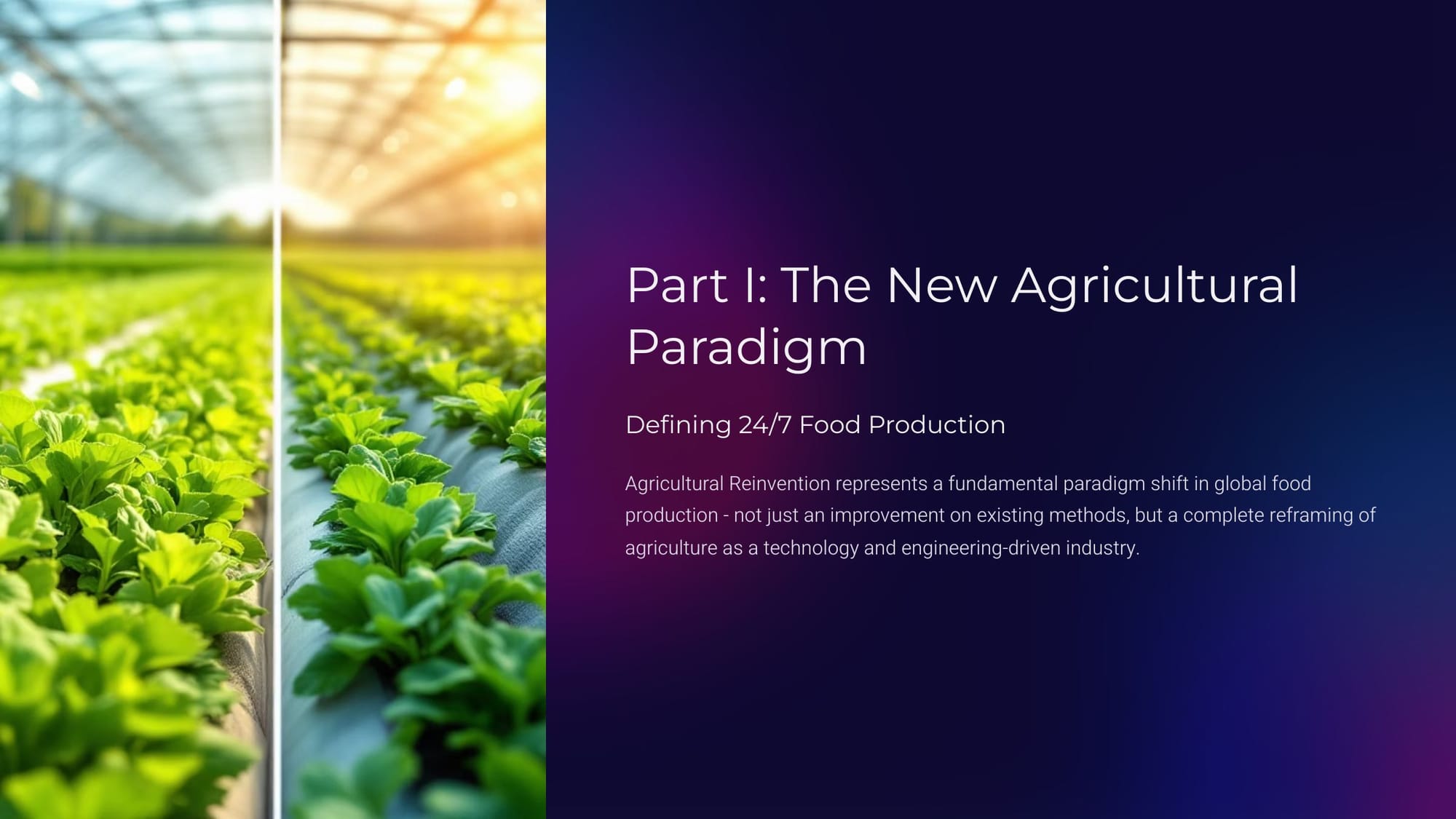
There are three foundational pillars to this new paradigm:
- Controlled Environment Agriculture (CEA). The practice of growing crops indoors within enclosed, highly managed structures. This pillar provides the physical foundation for precision and control.
- Robotics and Automation. The deployment of autonomous systems to manage tasks continuously. This pillar provides the engine for 24/7 operational efficiency and scalability.
- Data Science, AI, and IoT (Internet of Things). The use of sensors, predictive analytics, and integrated software platforms. This pillar serves as the central nervous system, transforming farming into a data-driven enterprise.
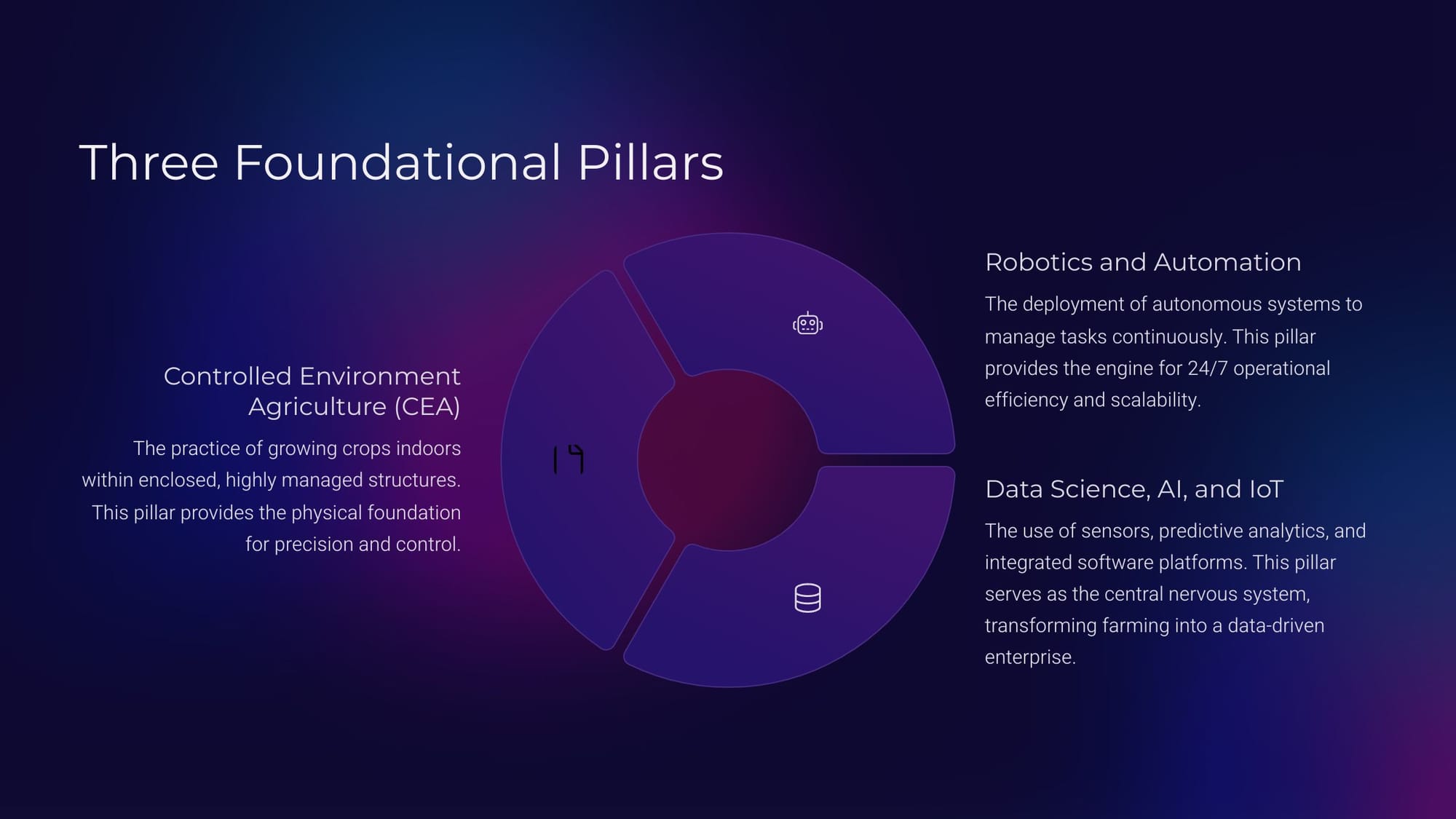
All of this means that we have the opportunity to take farming 'indoors' to become a high-tech, manufacturing-oriented industry. There's been a lot of innovation and investment already occurring in this space, with a lot of optimists about - you'll find that over in my original post on this trend. That said, there's also a lot of skepticism and doubt, particularly with the big farming industries in Canada and the US.
I'm with the optimists, believing this trend will unfold at scale outside of North America and will come about as food security comes to the forefront in many nations. Not only that, but the trend itself offers up some magical opportunities for innovation.
For example, to give you a sense of the magical impact of some of these trends, consider what we call Digital Terroir,which is the idea of "engineering flavor." In traditional viticulture, "terroir" describes the unique character imparted to a wine by its natural environment. In the new paradigm, terroir is engineered into food! The flavor, nutritional content, and texture of a crop are determined not by soil and sun, but by:
- Specific LED light recipes
- Precisely balanced nutrient solutions
- AI-controlled microclimates
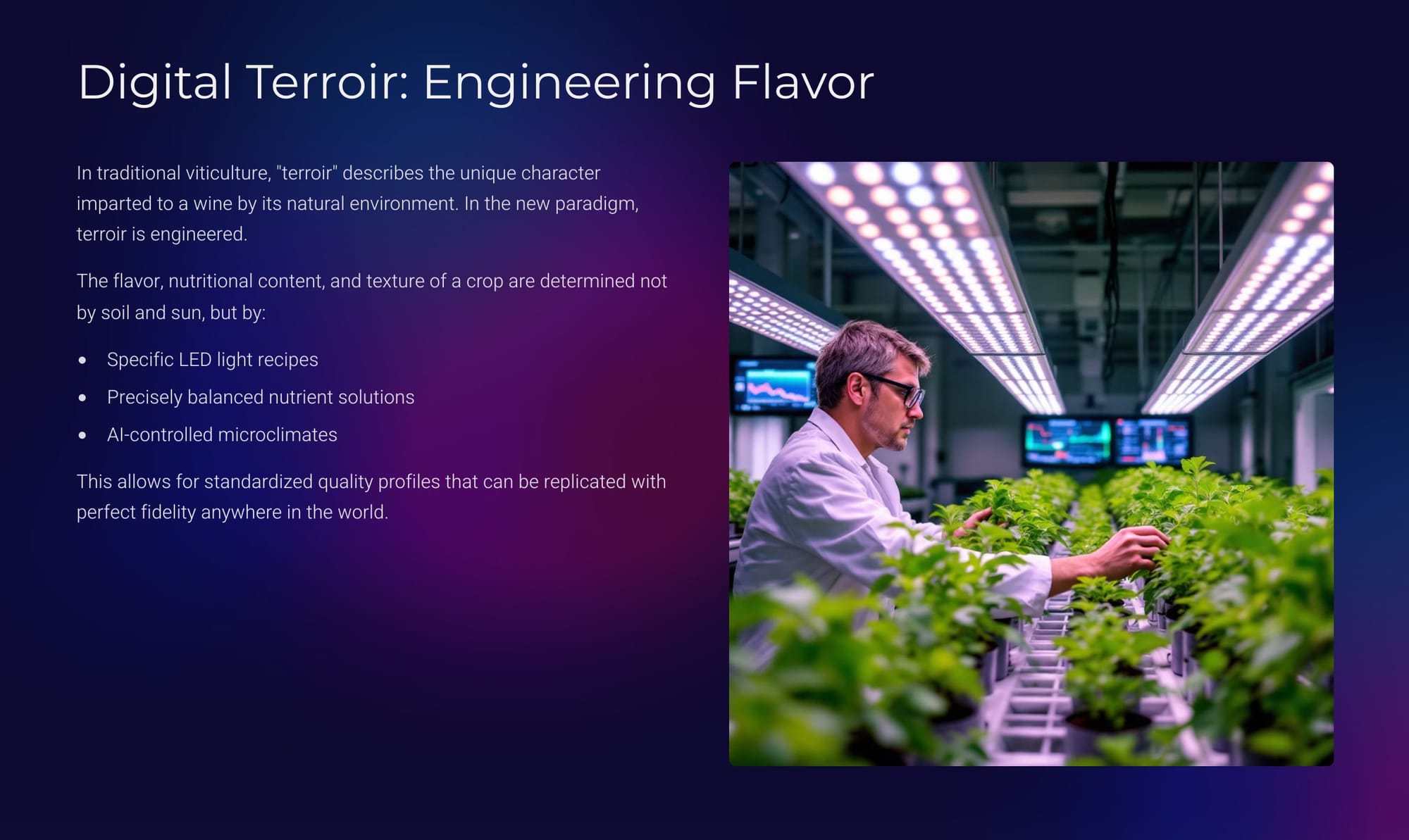
This allows for standardized quality profiles that can be replicated with perfect fidelity anywhere in the world.
What are the implications? When a strawberry's taste profile can be programmed and replicated in Dubai to be identical to one grown in Japan, it transitions from a unique agricultural good to a high-tech, replicable commodity.
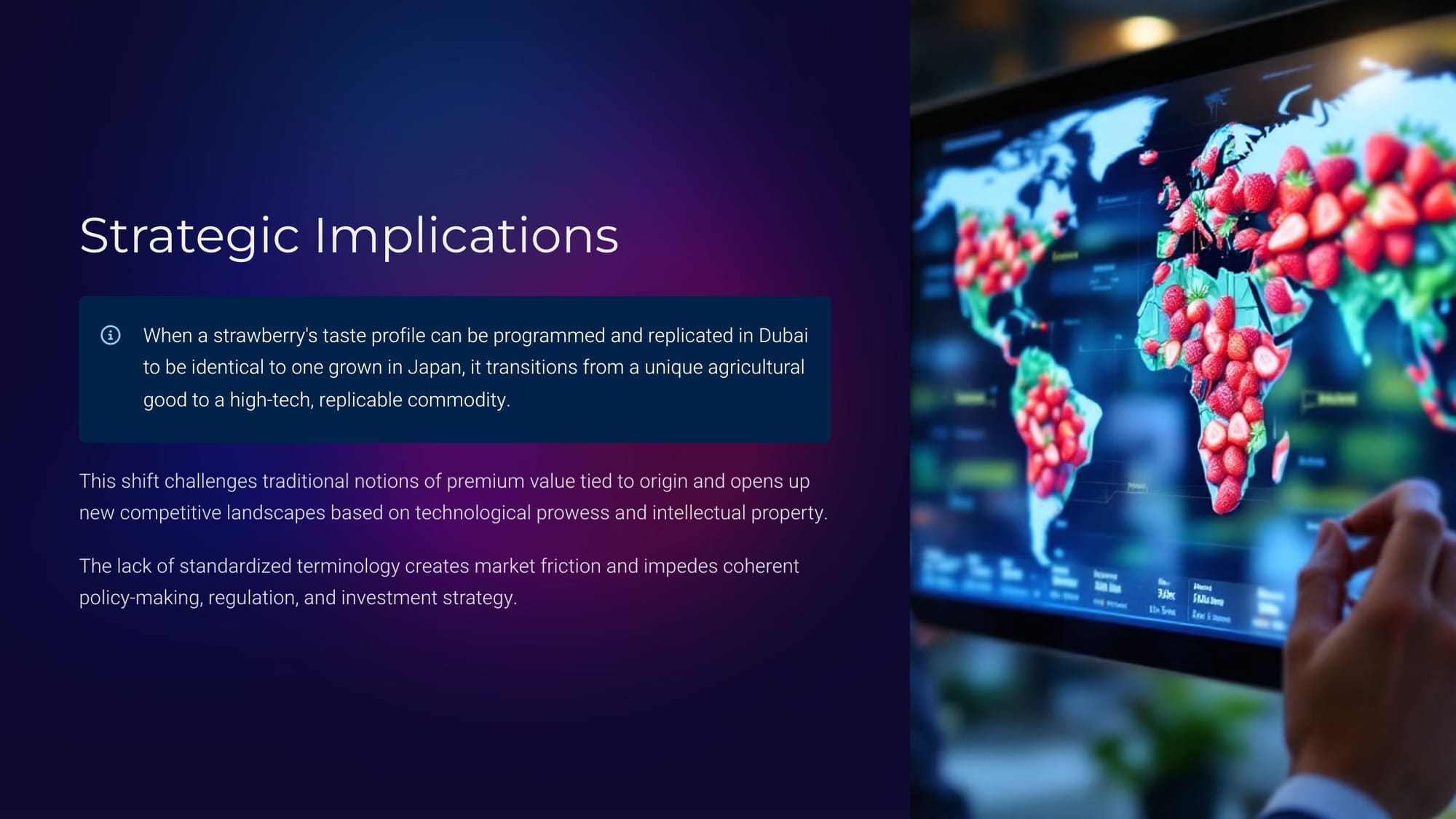
This shift challenges traditional notions of premium value tied to origin and opens up new competitive landscapes based on technological prowess and intellectual property. That's a big disruptive change!
What brings this about is the idea of 'light' as a 'programmable ingredient' for food production. Specialized horticultural LED lighting enables 24/7 production independent of day/night cycles and seasons, transforming light from a simple energy source into a precise tool for 'steering' plant biology. Different wavelengths serve specific functions:
- Blue light (430-460 nm): Crucial for vegetative development
- Red light (640-680 nm): Stimulates flowering and fruit production
- Far-red light (730 nm): Influences seed germination and leaf expansion
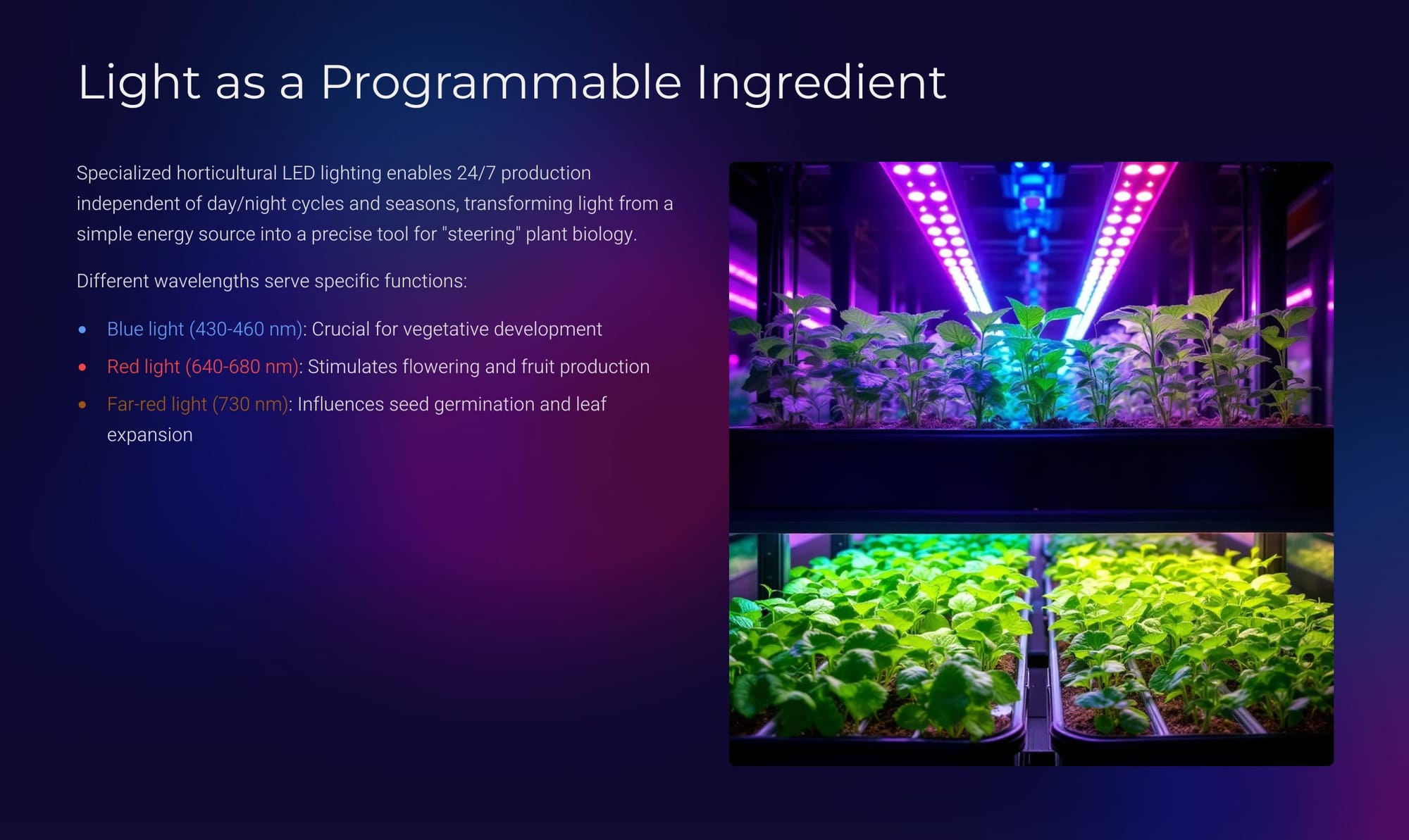
Then there is the impact of robotics and automation, which is the engine of 24/7 operations. Automation enables continuous, round-the-clock operations, driving efficiency, reducing labor costs, and increasing precision across the entire farming cycle.
- Seeding & Planting: Autonomous ground rovers and tractors guided by GPS and lidar for high-precision seeding and tilling.
- Crop Monitoring: Aerial drones and ground rovers equipped with sensors and cameras for continuous health monitoring.
- Weeding & Pest Control: Mechanical, laser, and precision spraying systems for targeted intervention without chemicals.
- Harvesting: Multi-armed robots with computer vision and soft robotics for delicate fruit picking.
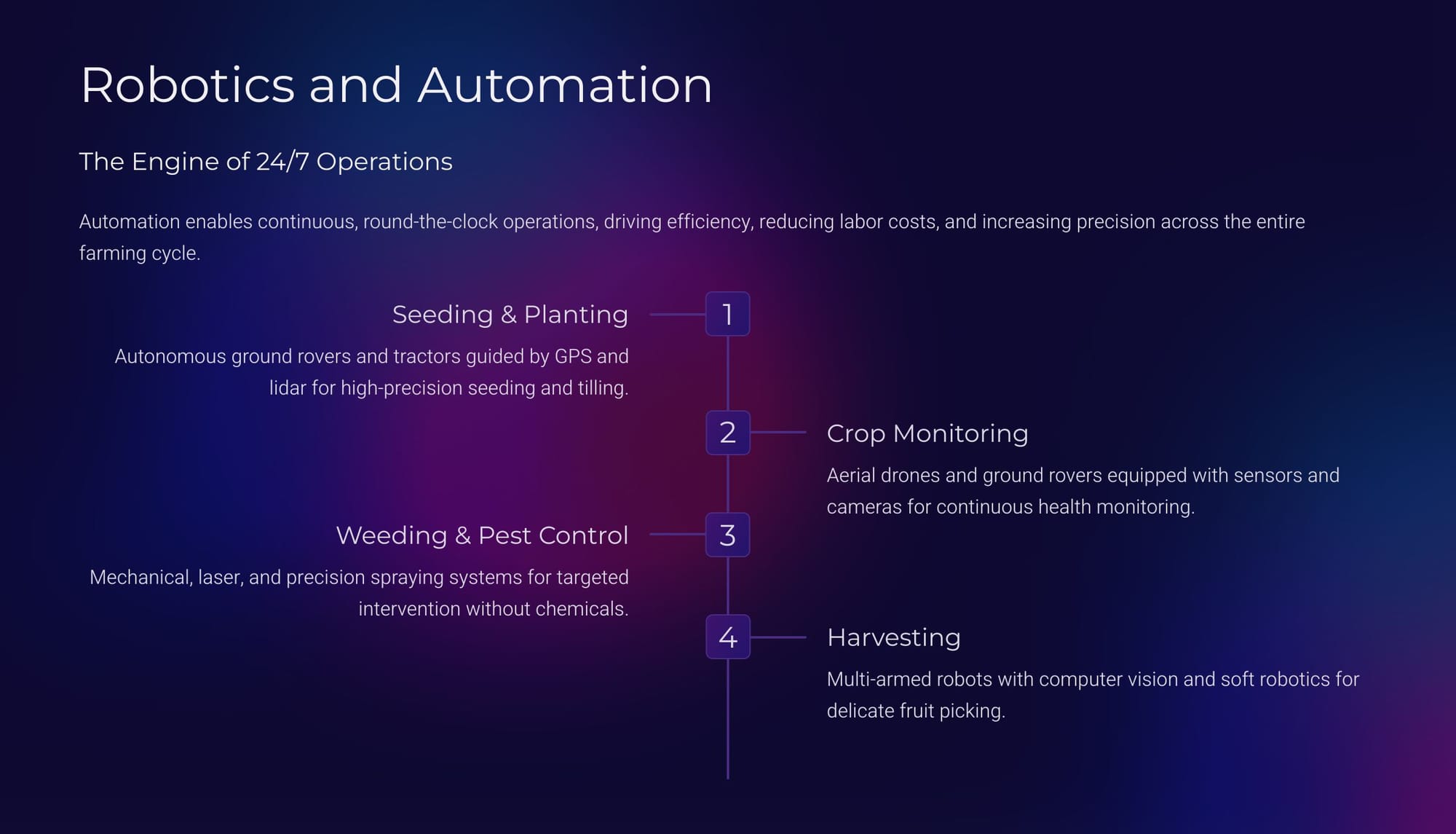
Then there is data, AI, and IoT! This is the 'central nervous system' of this new world of agriculture.
- Ubiquitous Sensor Ecosystem: A dense web of IoT sensors monitors every critical variable 24/7
- AI and Predictive Analytics: Algorithms transforming raw data into actionable insights for anticipating problems in the 'farm'
- Integrated Management Platforms: "Digital twins" of the entire operation enable autonomous decision-making and management
- Blockchain Technology: Creating immutable records of a product's journey from seed to shelf, a critical component of new food safety trends
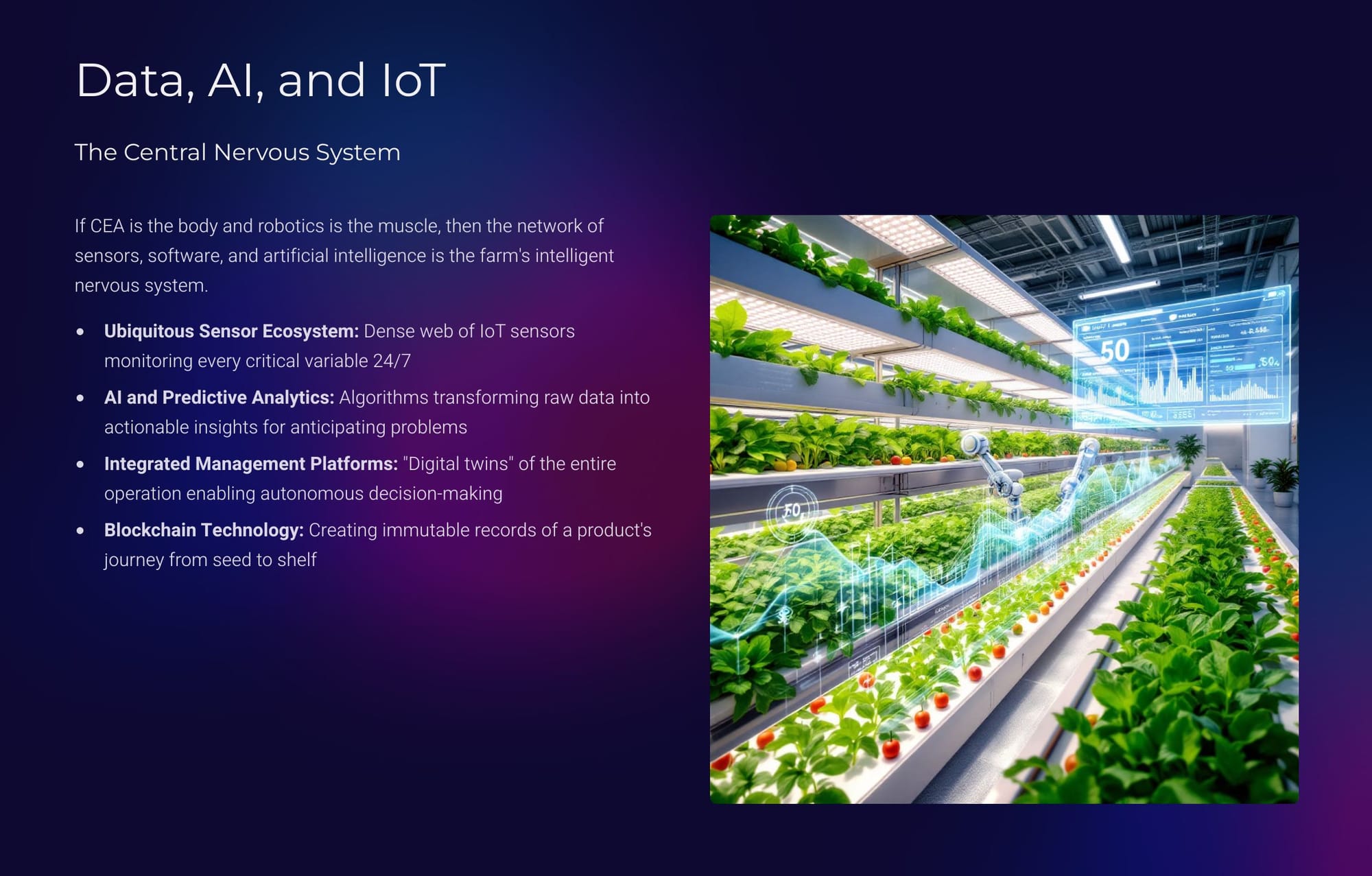
How is this coming about? Via two very different, divergent development models. First, the state-sponsored "Food Security" model, most evident in Singapore and the Middle East:
- The primary driver is national security, not commercial profit
- Governments act as principal investors and often anchor customers
- Success is measured by food self-sufficiency and supply chain resilience
- De-risks massive capital expenditures required for large-scale CEA
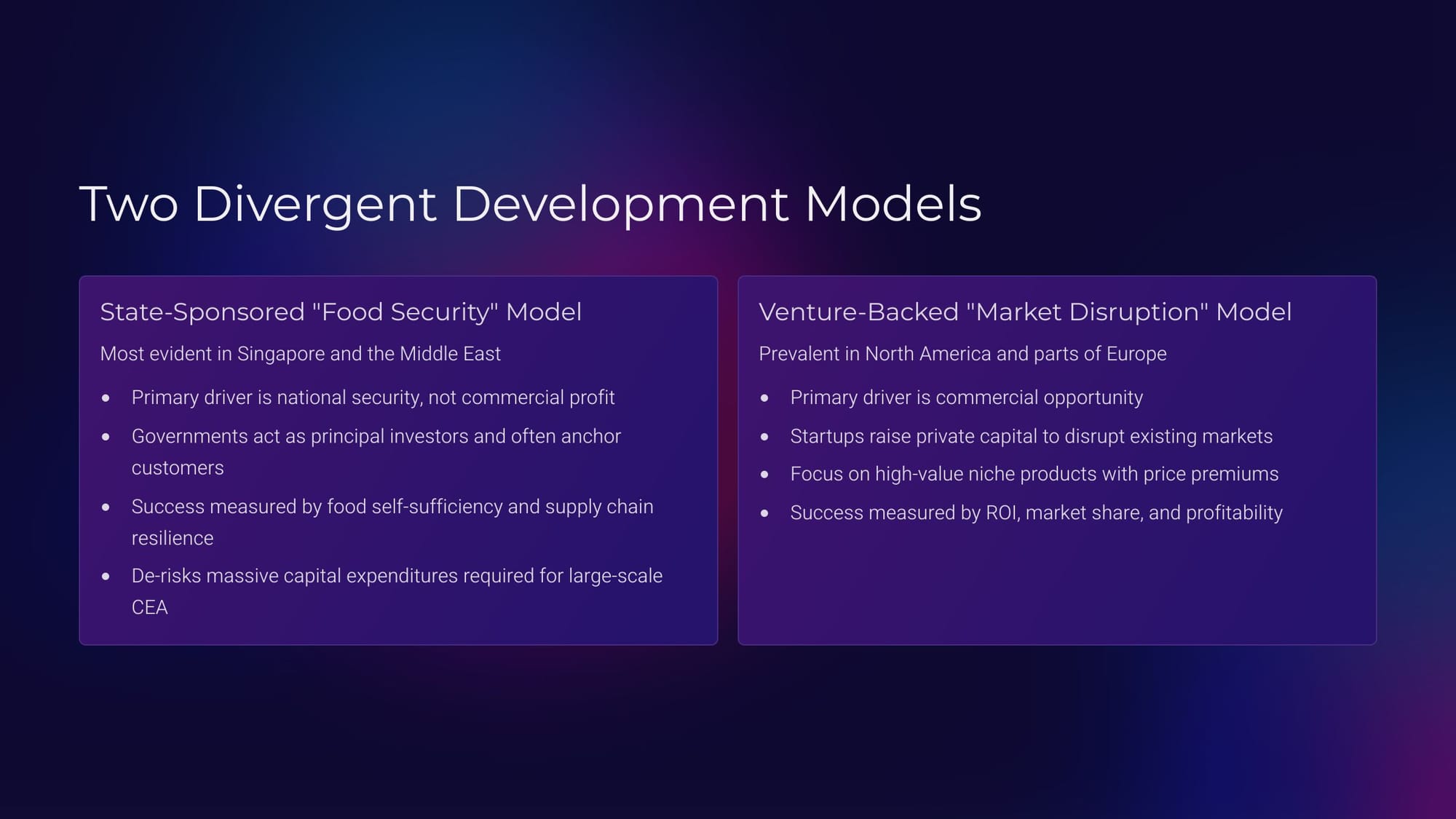
Then there is the venture-backed "market disruption" model prevalent in North America and parts of Europe
- The primary driver is commercial opportunity
- Startups raise private capital to disrupt existing markets
- Focus on high-value niche products with price premiums
- Success is measured by ROI, market share, and profitability
As a megatrend, it's important to keep in mind the timeline in which this might continue to unfold:
- Phase I: Efficiency & Optimization (2025-2028). Focus on reducing operational costs (OPEX) through energy-efficient LEDs, AI-driven energy management, and precision input application. CEA crop focuses on high-value leafy greens, herbs, strawberries, and specialty tomatoes.
- Phase II: Automation & Crop Diversity (2029-2032). Focus on reducing labor costs and expanding viable crops through autonomous harvesting for delicate fruits and breakthroughs in automated pollination. Full-stack operators begin achieving economies of scale.
- Phase III: Integration & Scalability (2033-2035). Focus on system-level integration and niche staple production. CEA makes strategic contributions to staple crops in resource-scarce nations, with vertical farms integrated into urban infrastructure.
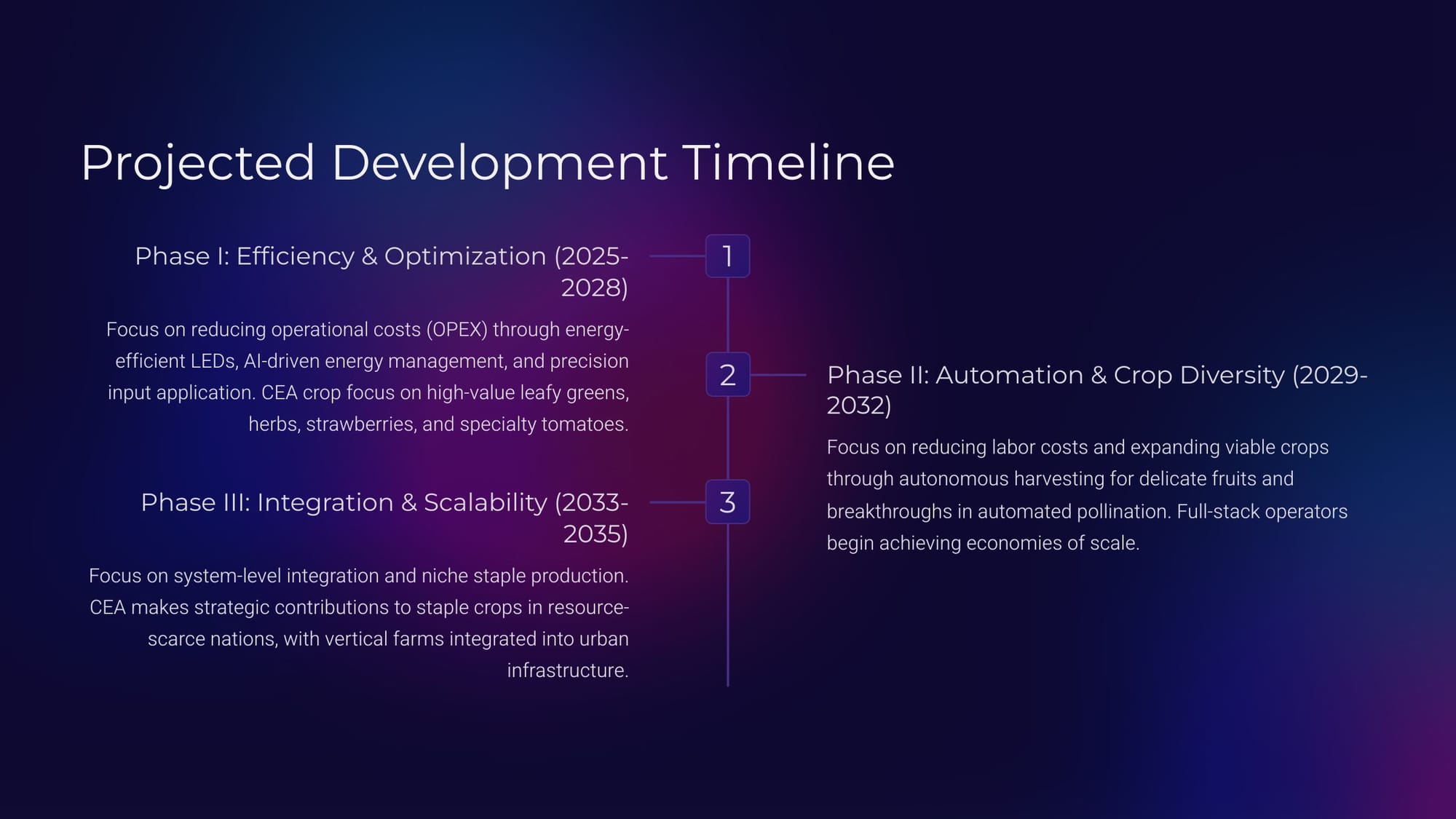
As I wrote in my original vertical farming opost: "As someone who tracks trends and the future, I believe that this trend is so compelling, and moving so fast, solving big problems, that it is one of the most significant trends that will unfold at speed over the next ten to twenty years."
I still believe this to be the case.
Keep your eye on this one!
Futurist Jim Carroll was once asked, after a keynote for several thousand farmers, how long he had been a farmer. He considers that to be the ultimate compliment.

